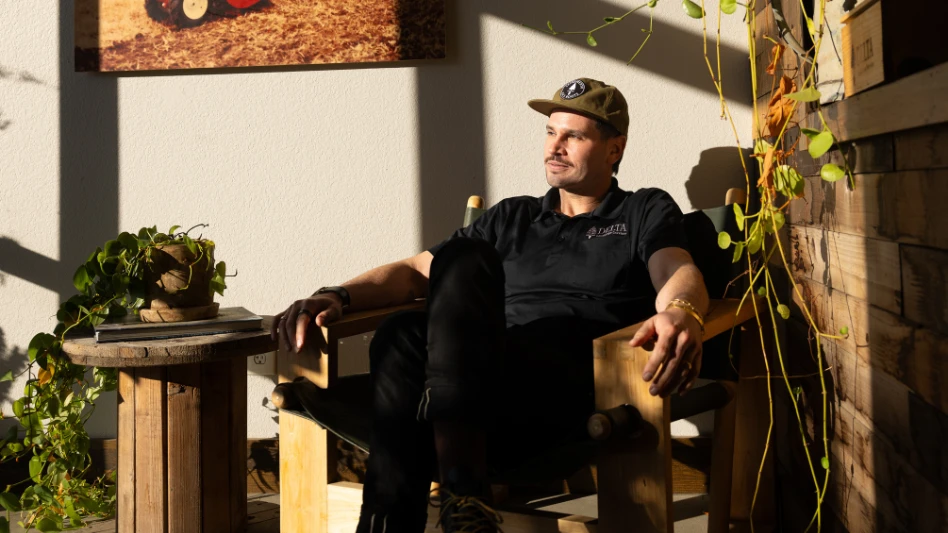 Selling enhancements is a great way to not only keep your revenue growing, but it also gives you another way to stay in touch with your customer. And nothing says enhancement like a design/build project filled with color. At home, commercial properties or multi-family housing, beds and beds of colorful plants make any property look nicer – a lot nicer.
Selling enhancements is a great way to not only keep your revenue growing, but it also gives you another way to stay in touch with your customer. And nothing says enhancement like a design/build project filled with color. At home, commercial properties or multi-family housing, beds and beds of colorful plants make any property look nicer – a lot nicer.
“Color is a big, big part of the landscape,” says Jeff Miller, president of Creativexteriors in Denver. “It’s a very critical element especially to most people who are visual.”
But not every contractor wants deal with the amount of maintenance it takes to get the most out of seasonal color. It’s year-round work, and, while you will enjoy the regular revenue the enhancement sales produce, customers might be turned off by the recurring cost. Lawn & Landscape spoke with three contractors who specialize in the niche about the ins and outs of the color game.
Slow and steady sales. Miller has been dealing in color for more than 20 years, and doesn’t plan on slowing down. Miller started his work with municipalities, and says working with color is a great way to keep revenue coming into the business on a regular basis.
“You can incorporate color into all landscapes,” he says. “So, if you are a landscaper first and foremost, you can design color into the spaces. The nice thing about color is it’s a reoccurring income. If you do it and do it well, it is something that comes back every single year.”
But because of its recurring nature, Miller doesn’t throw his whole pitch at a customer up front. Instead, he takes it slow, and gets a feel for what they want before suggesting seasonal additions.
“I typically ask them up front, ‘How important is color to you in the landscape and specifically, how important is annual color realizing there is a reoccurring annual cost to replant these things every year?’ A lot of times people will divulge to me what they are willing to do,” says Miller, who does 65 percent commercial and 35 percent residential work.
“If you just start designing a lot of residential color … with no regard of what these people are willing to spend, then you are kind of shooting yourself in the foot so to speak. If you start designing color for people, you need to work them into it. You go in with a minimal program, then you capture their attention with the color and the next thing you know they are saying, ‘I want to do more next year, I love what you did here, but now I want more on this side.’”
 If you are going to sell color to customers, you’ll have to know what flowers complement each other best. If you are going to sell color to customers, you’ll have to know what flowers complement each other best. |
And those contractors looking to make an immediate splash on the balance sheet might want to keep expectations low. Enhancement sales don’t take off overnight, but they do add up over time. If you are patient, color can make a long-lasting impression to the bottom line.
“Eventually, you can double, triple, quadruple their order over time,” Miller says.
While Miller won’t divulge specifics, he says the margins are “relatively good” when doing color installs and maintenance. But again, it’s the steady work that is attractive, especially for a company that does a lot of design/build jobs and they may not get paid for a while.
“We have a lot of employees to do the work for more minimal type margins, but it is reoccurring, and because it is maintenance, it does improve cash flow in the company,” he says.
Fifty-five percent margins. Sure, everyone enjoys the end result of a great color install, but there’s a lot of work that goes into knowing what looks good in what places, and in what conditions. If you are selling color as an enhancement, you better make sure you have strong grasp of the products you are putting in the ground.
Casey Vickery, president of Benchmark Landscapes in Austin, Texas, studies his products thoroughly and tests them out before ever making them the main event of a color install.
He says every plant performs differently in each environment, and some are more disease tolerant and need more maintenance.
“We’ve learned it just from trial and error over many, many years,” he says
Crews will set up different test sites on properties, and will put small numbers of new products in beds and monitor them.
“If it works well, then it’s something we’ll use more extensively the next year. The best way to learn about the products itself is look around and see what’s working for everybody else and use your local growers as resources,” Vickery says.
He adds that Benchmark has customers who will do 400 or 500 flats per change out and they’ll spend $40,000 to $60,000 a year on annual color.
“We’ll have test sites on their large, large, job sites or we’ll create beds for clients for free or make a bed a little larger and have tests sites,” he says. “That way it doesn’t cost the client anything for us to try it out.”
Vickery says contractors in his market can expect about 55 percent gross margin on color work, but the results will vary between residential and commercial customers.
“The residential landscapers are going to have a higher profit margin in it because they are using less quantity,” he says. “Commercial landscapers will have a little lower profit margin in it but they are doing larger quantities.”
Client education. Every contractor, without fail, will come across clients who know more than they do.
That’s very much the case when selling an enhancement like color installation, where a property manager or homeowner can be very passionate – and persistent – about the finished project.
 An eye-catching bed of color can spruce up a commercial property’s entrance. An eye-catching bed of color can spruce up a commercial property’s entrance. |
“Color selections are always personal,” says Melissa Scherb, vice president of business development for the Chicago branch of Landscape Concepts Management. “I can usually make any color selection work. However, if clients are tied to certain plants, that’s where an issue comes in.”
But the margins on the work help Scherb get past that problem. She says you can expect a net profit margin of 20-50 percent depending on what you sell.
“Using color to boost bottom line numbers is a great way to increase the value of your contracts, season after season,” she says. “My first tip is to encourage your client to see the value in color.
Adding planters or annual beds to storefronts or main entrances not only attracts customers and/or future tenants, but it also gives their site recognition from their neighbors or competitors. It is the easiest way to increase the value of your contract year round.”
Education and managing expectations of clients is critical. For example, Scherb says, you wouldn’t want to put a dark purple flower up against a dark granite building. Instead, push a client toward a lighter-colored plant that will pop.
“Or if a client wants to put in petunias in a shady location where they don’t fertilize, educating them as to why they won’t work is extremely important,” she says.
“I always try to bring with me color selections in advance or give them cuthseets of maybe two options for their site for each season. That way, they feel like they have made a decision yet we have pretty much directed them as to what direction we may or may not want to go.”
But you’re bound to encounter clients who do know what they are talking about, and it’s important to recognize when that’s the case, and use their knowledge to improve the design.
“I say things like, ‘Wow, you really know your stuff. Have you heard about this new plant, or have you ever tried this?’ Usually, I come up with a new plant they may not be as familiar with. This takes them off track and refocuses their attention on something else,” Scherb says.
But, if your client is married to a plant or color, and you can’t change his mind, Scherb says, “I simply say that ‘It’s clear that you have chosen your plant palette, but with all due respect, I am not sure that I can stand behind your plant selections.’”
If a client wants to plant seed impatiens for the third year in a row, and there are downy mildew issues with that plant, she will educate them and advise them to avoid using that flower.
“The last thing they want to do is have a mass planting of species that won’t perform to the level they are expecting.”
Even with the difficulties that will happen with selling color, it’s a service you want to investigate adding.
“I have personally seen color making a comeback,” she says. “I have seen spring color, fall color, bulbs and winter installations on the rise. If you provide your clients with budgets and proposals ahead of their budget time, they can work these numbers into their overall budgets.”
The author is associate editor for Lawn & Landscape. He can be reached at bhorn@gie.net.
For more on selling color, sign up for our quarterly Ornamental Insider by visiting www.lawnandlandscape.com/newsletters.

Explore the July 2012 Issue
Check out more from this issue and find your next story to read.
Latest from Lawn & Landscape
- Wilson360 adds Daniel Grange as new consultant
- Batman and business
- CH Products releases new tree stabilizer
- Savannah Bananas founder Jesse Cole to speak at Equip Exposition
- Catch up on last year's Benchmarking report
- Davey Tree promotes Kevin Marks as VP of Western operations
- Bobcat Company names 2025 Dealer Leadership Groups
- Green Lawn Fertilizing/Green Pest Solutions awards employee new truck for safe driving





